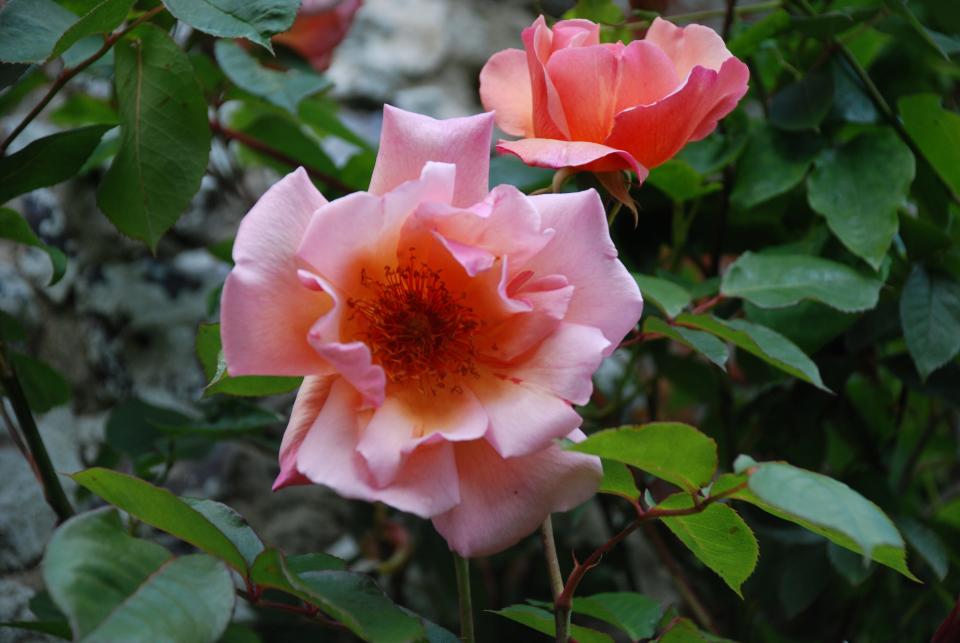Celebrate fall with the 'Queen of all Flowers'
There are many reasons for growing roses. Roses come in a stunning array of shapes, sizes, and colors, making them a truly diverse flower and a favorite for the garden. Fall is a particularly good time to enjoy your roses. Some roses actually bloom better in the fall than they do through the summer, as the heat of the summer subsides and the crips, cool nights and less humidity, roses perform better. These autumn days give us bountiful blooms in deep rich colors, and a time to celebrate the work that the gardener has put into making them preform magnificently.
Some say that Roses are the “Queen of all Flowers”. Roses have been grown throughout history and they are probably the most celebrated flower grown. You can read about roses in history at least as far back as the Pharaohs in Egypt. They have also been mentioned in poetry verse and you see them in old, as well as new, paintings. “Roses can signify love”, they are the flower of Valentine’s Day, and are associated with femineity and purity. Roses communicate friendship when given away. Roses are not only beautiful when in bloom but if they are fragrant, this makes them even more special.
My love of growing roses began shortly after I was married. We moved to the country after living in town for about two years. Here I had plenty of room to plant a rose garden and I could not wait to get started. I had never grown roses before, but I knew I could learn and hoped to have a beautiful garden one day. I was not as much of a reader of how to grow roses in those days. I spent more time asking people who grew roses what their secrets were or what were some of the things they did to be successful.

I met a man, Herman Whitaker who became my mentor and we developed a great friendship. We gardened together and I learned a great deal from him. The first thing he told me was to remove the black plastic between the roses that I had been told by another rose grower to put down so I would not have to weed. Next, he helped me select roses that would perform in our hot, humid climate. I had chosen ones that had pretty photographs in the catalogue, but were not necessarily hardy roses. He showed me the ratings of roses put out by the American Rose Society and told me we had to start with ones that were known to be strong and more resistant to diseases.
One of the first things I learned from him was how important water was to roses. Roses need a lot of water! They need the equivalent to an inch of rain per week or about 5 gallons of water per week per bush. This is especially important during the summer. If roses do not get enough water, they will not preform properly. I happened to think drip irrigation is best and run my timer about 60 minutes. Cooler climates can live with less but I use this as a guide line when it is hot. Plus, they prefer a deep soaking rather than a little water here and there.
The location you choose is also very important since they need at least six hours of sun. Morning sun is ideal because the hot afternoon sun tends to make the flowers fade quicker. When I first chose the spot for my roses, it was 100% sun. Over the years some trees have grown and now they get morning sun and afternoon shade. I think the colors are richer since they have some relief from the strong afternoon sun.
Like all plants, roses need three primary nutrients to grow and bloom exquisitely: Nitrogen, phosphorus, potassium plus certain trace elements. Most good, rich, garden soils provide some of these nutrients but they become depleted and need to be replaced.
Alfalfa provides nitrogen, calcium, iron, phosphorus. Alfalfa meal can be worked into the soil around rose bushes using one cup for large bushes and about one-half cup for small ones. Another way to add a little nitrogen to bushes is to sprinkle coffee grounds around the base of rose bushes at any time during the growing season to help boost nitrogen. Old chicken litter is even better if you have access to this.
When I started growing roses, I did not realize that all roses were not fragrant. It seems that when breeders worked hard to get lovely roses that would have a repeat blooming cycle all summer, they bred out fragrance. There are some hybrid tea roses with fragrance but many do not have any fragrance.
Roses have had a spectacular rise in popularity in recent years because of the breeding work that has recently been done and because of how easy some of the newer varieties are to grow. These shrub roses are a large and diverse group. Many do not require all the spraying and attention of hybrid tea roses yet still bloom. Some are bred so that they can be planted in perennial borders and to ramble over the top of other plants.
In recent years, a man named David Austin had the idea to come up with a new rose, one that would have the repeat blooms of the hybrid tea roses and the fragrance of the old English garden rose. He worked for years and finally came up with a line of roses that are beautiful repeat blooming roses with fragrance. Knockout roses have also been developed and are quite popular as are other shrub and carpet roses.
My favorites are still the hybrid tea roses that take more care but I am slowly adding some of these newer roses to the garden too. Roses deserve to have a spot in a garden. Many roses are long lived and produce elegant flowers. Roses will add beauty to your garden and will add a lovely touch to any room when you bring them into your home.
Betty Montgomery is a master gardener and author of “Hydrangeas: How To Grow, Cultivate & Enjoy,” and “A Four-Season Southern Garden.” She can be reached at bmontgomery40@gmail.com.

This article originally appeared on The Fayetteville Observer: Roses, a garden favorite, in their glory during the fall season

